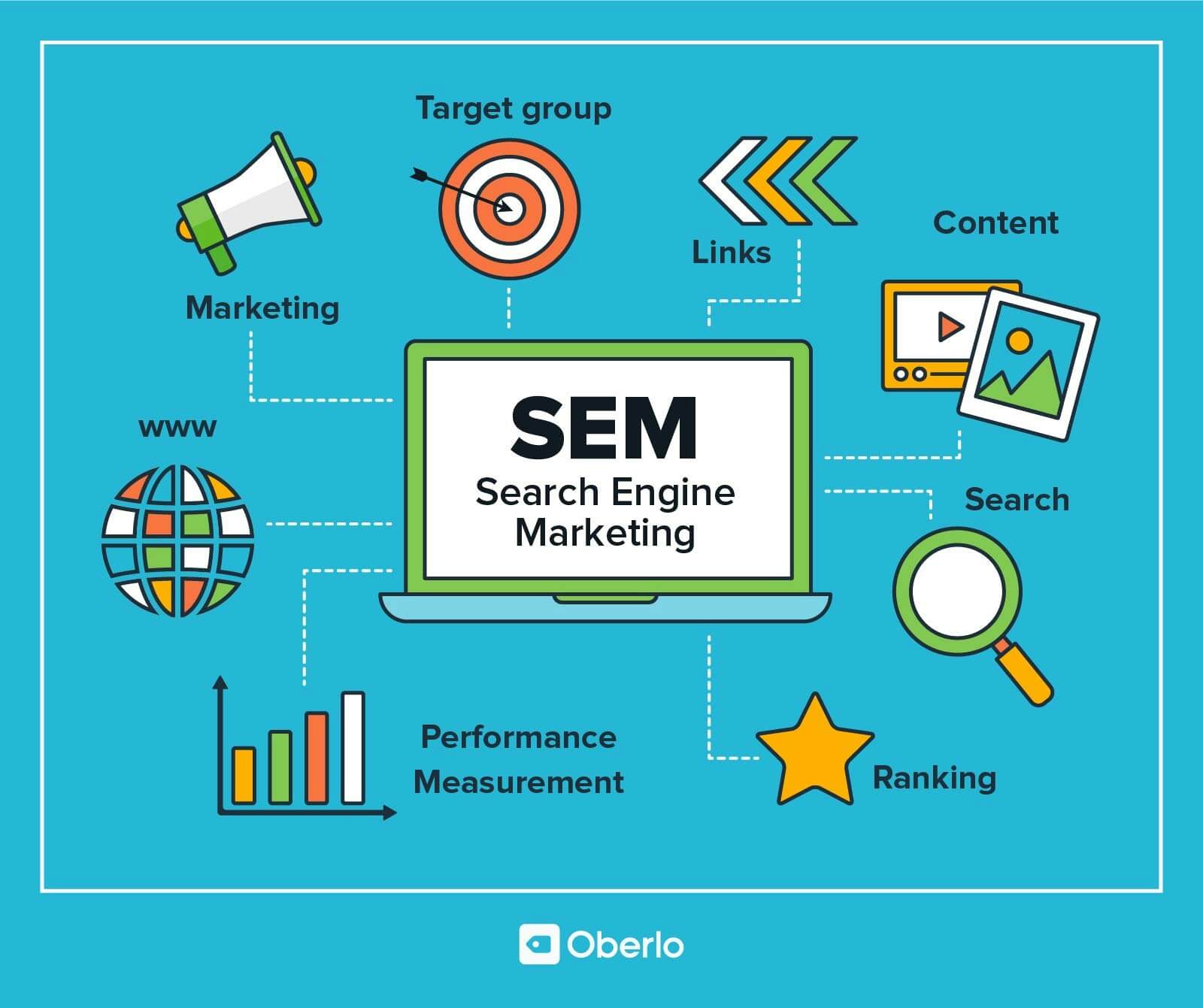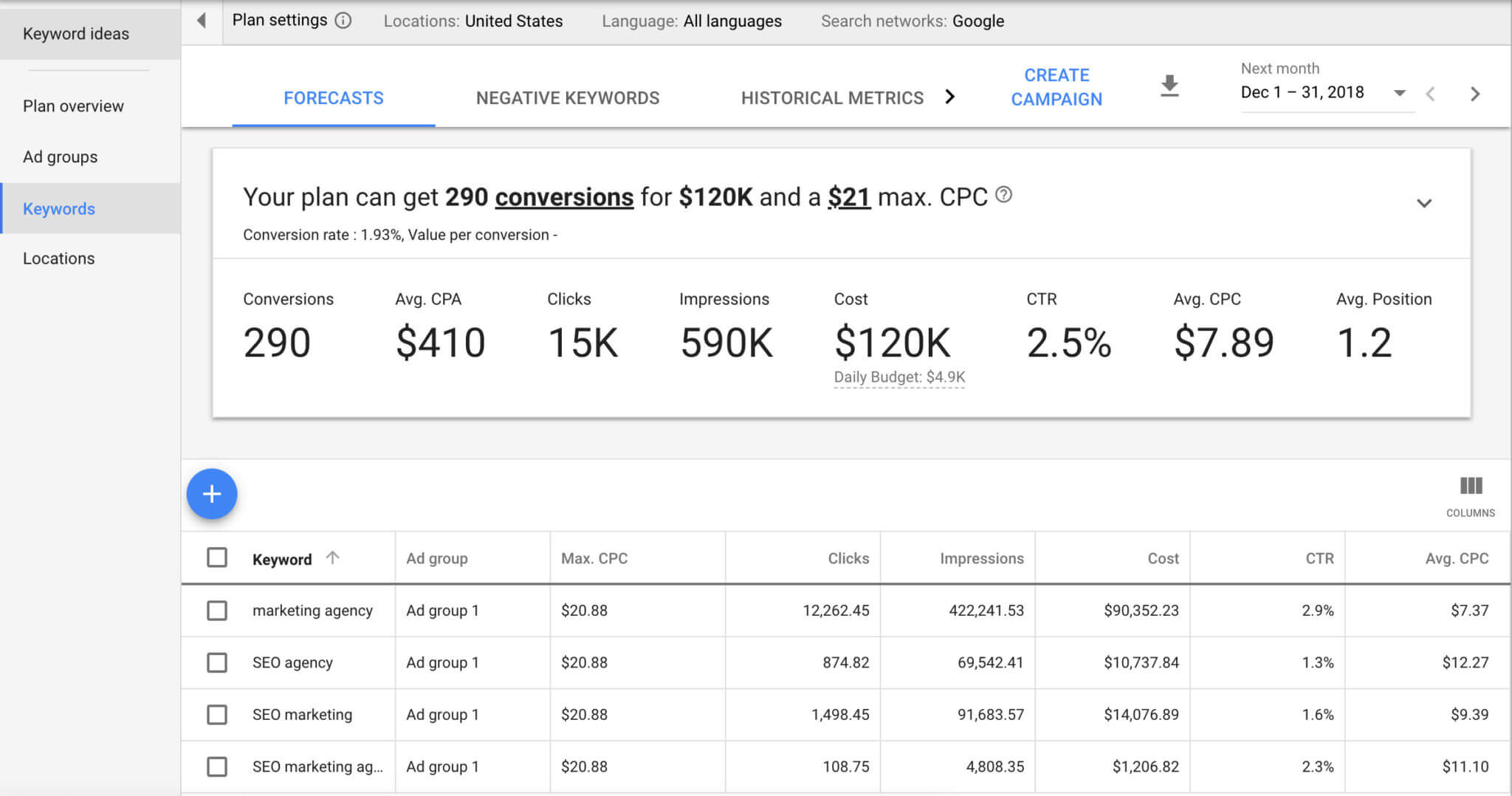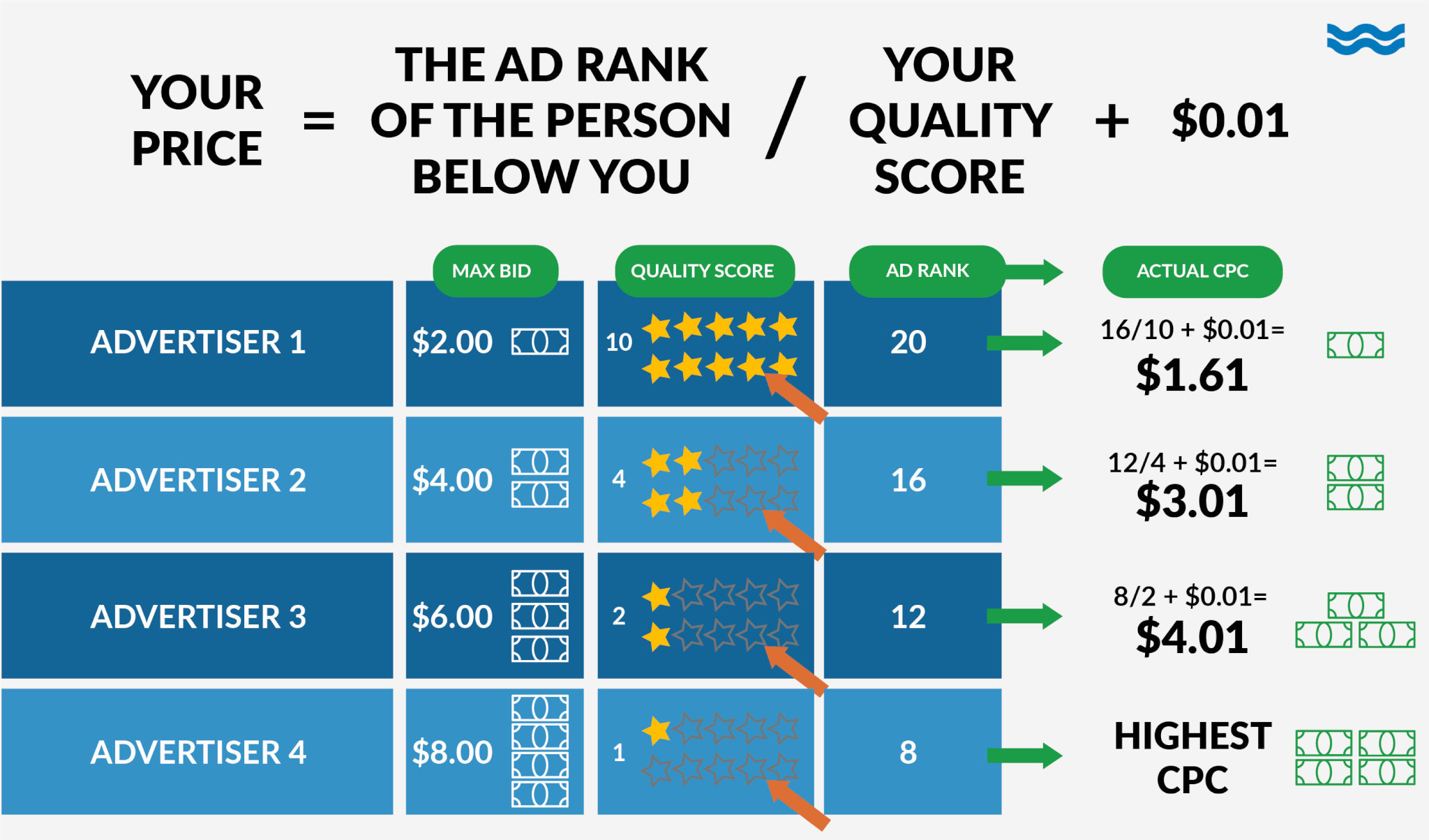In today’s digital world, understanding how to effectively market your business online is crucial. Search Engine Marketing (SEM) stands out as a beacon for businesses looking to navigate the vastness of the internet to reach their audience. This guide will walk you through what SEM is, how it works, and why it’s essential for business success, all while keeping things light and easy to grasp.
What is SEM?
SEM is a comprehensive strategy that involves promoting your website by increasing its visibility in Search Engine Results Pages (SERPs) through paid advertising and optimisation. It is like setting up a brightly coloured billboard on the digital highway of search engine results. This method allows businesses to target potential customers who are actively searching for information, products, or services online. Unlike traditional advertising, SEM places your business right where your audience is already looking.
How SEM Works?
Imagine you are at an auction, but instead of bidding for antiques, you’re bidding for the top spot on SERPs. This is the essence of how SEM works. Businesses bid on keywords that are relevant to their products or services. The business with the best bid will be rewarded the first three positions (sometimes four or five) on the first page of Google, Bing or Yahoo – depending on which search engine you are targeting.
To put it simply, when a user types for specific keywords in the search bar, the search engine sifts through the bids and decides which ads to display based on key SEM factors (which we will cover further down in the article, so keep reading!). After analysing each candidate thoroughly, the ads with the best content will be displayed first for said user.
Why SEM Matters?
Standing out amongst the behemoth of websites can be challenging. That’s where search engine marketing shines. It targets users who are ready to buy or engage, making it a highly effective tool for driving relevant traffic to your site. Imagine opening a store in a busy marketplace versus a secluded alley.
SEM places your store in the busiest part of the digital marketplace. It’s quick to implement, compared to SEO (Search Engine Optimisation) which can take months to show results. Plus, SEM is flexible and measurable, allowing you to adjust your campaigns based on performance data and ensure you get the best return on investment.
What are SEM Metrics?
To navigate the SEM landscape effectively, you need a map and compass. This is where SEM metrics come in to guide you to measure the performance of your campaign and plan strategically with the budget you are given.
- Click-Through Rate (CTR): This metric measures the percentage of users who interact with your ad through clicks. A higher CTR indicates a more effective ad because it means people are resonating with the ad and taking action towards it.
- Cost Per Click (CPC): This metric provides the average cost paid for each click on your ad. Lowering CPC while maintaining or increasing quality traffic is a common goal.
- Conversion Rate: This metric shows the percentage of clicks that result in a desired action, this will defer based on the type of campaign and lead identifier set by businesses, be it a sign-up or purchase. It measures the effectiveness of your ad in driving conversions.
- Quality Score: A metric used by search engines to determine the relevance and quality of your ads, keywords, and landing pages. A higher quality score can lower the cost you have to put on bidding and it can put your ad in a better position.
What are the 3 Main Search Engine Marketing Products?
The landscape of search engine marketing itself is vast and varied, offering multiple platforms for businesses to reach their target audiences effectively. Among these, three stand out for their unique features and broad reach: Google Ads, Microsoft Advertising (formerly Bing Ads), and Social Media Ads. Each platform serves as a powerful tool in its own right, catering to different aspects of SEM and audience targeting.
- Google Ads: The titan of SEM, Google Ads allows businesses to display ads on Google’s search results and its other properties. Google Ads operates on a pay-per-click (PPC) model, allowing advertisers to bid on keywords relevant to their target audience and pay only when a user clicks on their ad. Given Google’s vast reach, it is a critical platform for SEM campaigns.
- Microsoft Advertising: Microsoft Ads is the underdog compared to Google but still vital. It powers ads on Bing and Yahoo, offering a valuable alternative audience. Microsoft Advertising also uses a PPC model and offers similar features to Google Ads, such as keyword targeting and a variety of ad formats. The platform is particularly noted for its integration with LinkedIn, allowing advertisers to target users based on professional data from LinkedIn profiles. This feature is especially beneficial for B2B companies and those targeting professionals in specific industries.
- Social Media Ads: While not traditional search engines, platforms like Facebook, Instagram, and LinkedIn use detailed user data to serve targeted ads, functioning similarly to SEM in their ability to reach specific audiences based on their searches and interests.
What Business Should Focus When Doing SEM?
Keywords
Choosing the right keywords is like picking the right location for a billboard. It needs to be where your target customers are. Effective keyword selection involves understanding the terms your audience uses when searching for your products or services. This requires research and insight into customer behaviour. Keywords should be relevant, specific, and aligned with your audience’s search intent.
Tools like Google Keyword Planner, SEMrush, and Ahrefs are the go-to choice to work on your keyword research. These tools provide valuable insights into keyword search volumes, competition levels, and trends. They can help you uncover long-tail keywords with lower competition but high relevance to your target audience.
Keyword selection is not a set-it-and-forget-it process. It requires continuous monitoring and optimisation based on campaign performance and the dynamics of search trends. What works today might not be as effective tomorrow, as market dynamics and user behaviors evolve. Regularly reviewing and adjusting your keyword strategy is essential for maintaining and improving SEM campaign effectiveness.
Ad Auction
The ad auction is the heart of SEM. Businesses need to understand how it works to effectively bid on keywords. It is not just about the highest bid but also ad relevance and quality. A well-optimised ad with a lower bid can outrank a higher bid that is less relevant. Understanding this process allows businesses to strategically manage their bids and improve their ad positioning without necessarily spending more.
Search engines like Google and Bing use a combination of factors to decide which ads are the most relevant and useful for a particular search query. These factors include the bid amount, the ad’s quality, the keywords’ relevancy, and the landing page’s user experience.
Below are recommended strategies to put your campaign in the right direction towards success:
- Optimise for Quality Score by focusing on creating relevant, high-quality ads that closely match your target keywords. A higher Quality Score can lower your costs and improve your ad placement.
- Utilise Smart Bidding instead of setting the highest bid you can afford. Tools like Google’s Automated Bidding can adjust your bids in real time, using machine learning to predict which clicks are likely to lead to conversions.
- Prioritise keyword relevance as this can improve your chances of a higher Quality Score and better Ad Rank.
- Monitor and adjust your ads campaigns because the ad auction is dynamic, with bids and rankings constantly changing. Regularly monitor your campaigns’ performance, adjusting bids, keywords, and ad creative as needed to maintain or improve your Ad Rank.
Landing Page
Creating optimised landing pages is akin to rolling out a red carpet for your guests, guiding them smoothly towards where you want them to go and subsequently, the action you want them to take. These pages are the crucial touchpoints where SEM-driven traffic lands after clicking on your ad.
The goal is to ensure that this landing is not just a touch-and-go but the beginning of a journey that leads to a conversion, whether it’s making a purchase, filling out a contact form or simply signing up for a weekly newsletter. Here are actionable tips you can take to ensure your landing page is user-friendly:
- Seamless User Experience (UX)
- Clear Call-to-Action (CTA)
- Content relevance and value
- Optimisation for conversion
Final Takeaways
Search Engine Marketing is an invaluable tool in the digital marketer’s toolkit. It offers a direct route to reaching potential customers, with the flexibility to adapt and the measurability to ensure effectiveness. By focusing on key aspects like keyword selection, understanding the ad auction, and leveraging the main SEM products, businesses can craft successful SEM campaigns that drive traffic, increase visibility, and ultimately contribute to business success. Remember, in the bustling digital marketplace, SEM is your billboard, auctioneer, and salesperson, all rolled into one.




